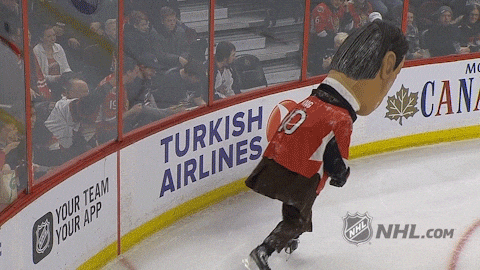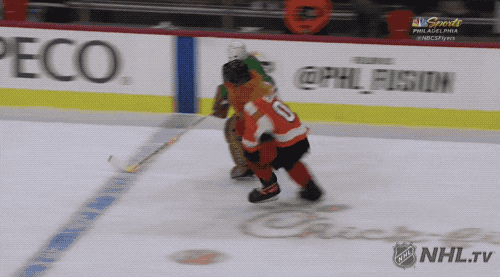Hockey Strength and Conditioning
Ice hockey is one of those sports where there is a ton of speed involved. Athletes are skating on ice with minimal amounts of friction and there are big, athletic, explosive people moving at very high speeds. It is an extremely explosive sport with a lot of strength components. It also involves a lot of skill and coordination. On top of that, it is a contact sport.

There are a lot of variables that we have to focus on when strength training for ice hockey. It isn’t just going into the weight room, hitting squats, deadlifting, doing some curls, and heading home. We have to factor in a whole bunch of key elements that contribute to solid training.
1. Speed
The first key element in ice hockey is basically the same key element in almost every single sport. That key element is speed. If we are trying to dominate in the rink and we want to be beast hockey players, we have to focus on speed.

We believe that when doing a lot of speed-based work in the weight room, doing the work holding an object, like a stick, to mimic speed movements on the ice. This is a key concept: using an object in hand when executing speed work.
But how do we actually execute speed on the ice?
We know that when we start and initiate the stride, we are performing this movement from a unilateral position. We also know that there will be a rearward stroke finish when trying to execute a high-speed movement on the ice. These are key components.
Now stride length is going to be the distance traveled laterally while actually skating. At really high speeds is when we will see the longest stride lengths. But the thing with ice hockey is that very rarely will athletes be at top-end speed. Athletes will always be focusing on acceleration with hip flexion, knee flexion, and that forward lean. This means that a lot of our speed work needs to be acceleration work. This creates a focus on the rearward finish.
The rearward finish focus leads us to select exercises that give way to unilateral quad-based work, unilateral glute work, and also unilateral hip extension work. This will lead to developing speed and acceleration that will transfer incredibly well over to ice hockey.
2. Force Absorption / Absolute Strength
We need to focus on force absorption, and along with force absorption, a lot of absolute strength. Why? Let’s think about how we are cutting and starting on the ice. For instance, there has to be a ninety-degree turn of the skate to lead to the rapid deceleration; we then have to get out of that rapid deceleration very quickly. This requires a ton of force absorption and then a ton of absolute strength to overcome the dead stop and lead into acceleration.

This means we have to work on hip extensors and quads with technical coordination movements like a dead stop power clean. Another movement is doing high bar back squats with a slow eccentric and pause in the bottom, following the pause by driving up as fast as we can.
We then can do some unilateral force absorption work, rest two to three minutes, and then do some unilateral absolute strength work. For example, we can do heavy single-leg squats, rest, and then do jump lunges while pausing in the split.
All of these examples will increase force absorption and absolute strength. Ideally, this will carry over to cutting, starting, stopping, and increasing overall coordination out on the ice rink.
3. Dynamic Trunk Control
We need to define dynamic trunk control. For instance, if we are skating at higher speeds, trying to cut rapidly while having the puck, having more dynamic trunk control will allow us to have co-contractions in the trunk, abs, and back that make us more stable; being more stable in the trunk allows us to stop and start easier while coordinating with the stick simultaneously to execute the technical aspects of the sport. We have to train dynamic trunk control while understanding that co-contractions are skills the body has to learn. So while in the weight room, we need to think about what movements increase our skills and provide more stability so that we can become more agile.

We also need to understand that the torso determines the skate-force vector. This means that the more control we have in specific positions with the trunk, the better we will be at applying force in that specific vector that will lead to higher power output and more speed.
Training dynamic trunk control we can do various technical movements, reflexive movements, explosive plyometric movements that involve the trunk, lateral jump movements with a focus on the trunk, or pre-fatigue movements like doing an ab-wheel for a set of fifteen before working through a complicated plyometric series. This will lead to better control and better mind-muscle connection, and ultimately superior dynamic trunk control that leads to better performance on the ice.
4. Unilateral Stability
We have to understand that when we ground when we put the skates down, our hips and our knees are going to be flexed at touch down. We are pre-loading our glutes and to increase our unilateral stability we have to focus on improving our quad strength and glute strength. On top of that, at times, we have to do this with a forward chest lean. For instance, doing a skater squat into a banded hip lock is a really good unilateral stability movement. The movement helps improve the glutes and quads contracting together to help stabilize the drive forward.

We also need to focus on hip abduction (the skate going away from the hip girdle). We also need to focus on hip adduction (bring the skate in and under the body). We can use movements like a Cossack squat, sliding Cossack squat, or sideband walks. Simple movements to improve unilateral stability.
Finally, a key concept is improving ankle mobility. Dorsiflexion in the angle allows for a greater forward lean to be faster. It is important to mobilize the ankle joint while improving unilateral stability.
Recap
All of these elements are intertwined. Greater unilateral stability coupled with dynamic trunk control allows for more coordination with stick handling. Better stick handling allows easier domination of opponents. Add to this having greater force absorption and superior speed allows for a winning combination on the ice rink.
DANE MILLER
Dane Miller is the owner and founder of Garage Strength Sports Performance. He works with a select handful of clients on building comprehensive programs for fitness and nutrition. Several times a year he leads a workshop for coaches, trainers, and fitness enthusiasts.


